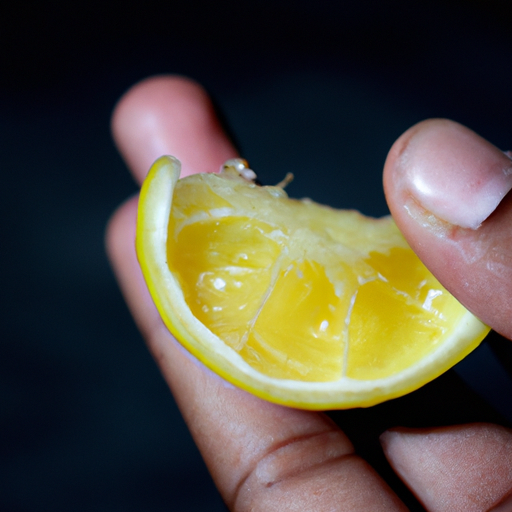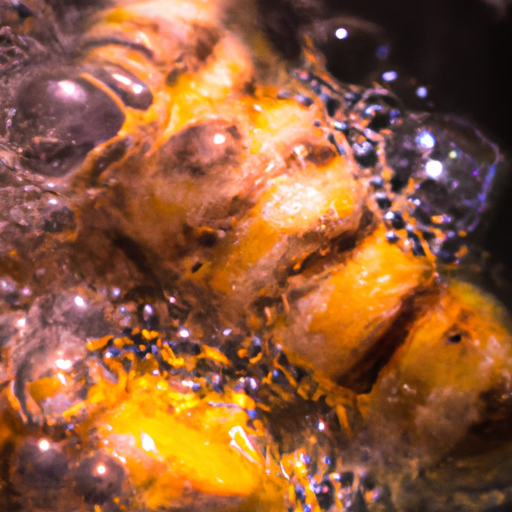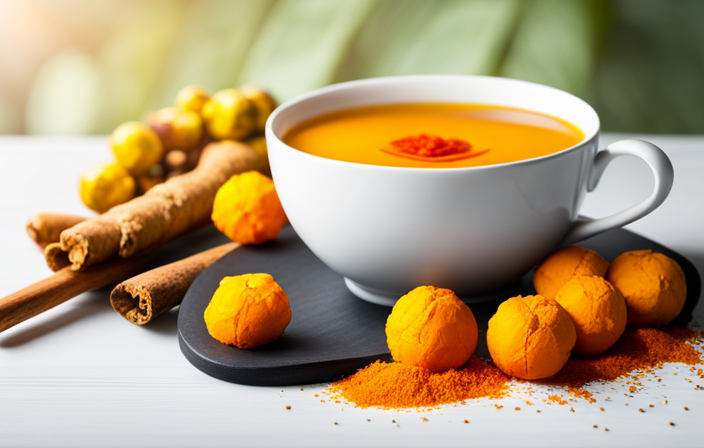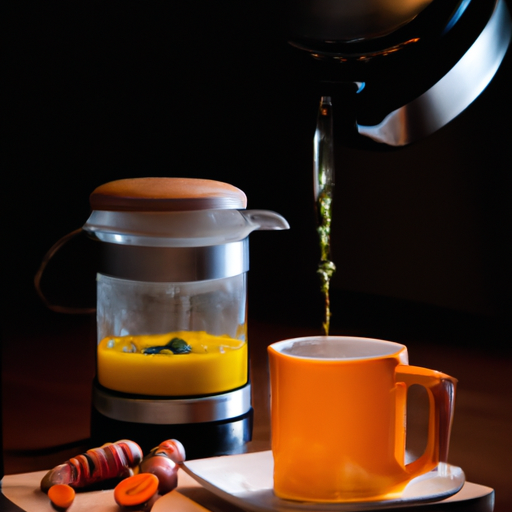As someone who loves everything natural, I have been trying out turmeric for a long time. I incorporate it into my food, beverages, and even facial masks. However, despite my fondness for this spice, I cannot overlook its ability to stain.
Turmeric stains are notoriously difficult to remove, especially from skin. Trust me, I’ve learned this the hard way. If you’ve ever cooked with turmeric or used it in your beauty routine, you know how frustrating it can be to deal with the yellow-orange stains it leaves behind.
But, fear not, because I’ve gathered some effective tips and tricks to help you remove those stubborn turmeric stains from your skin. With a little bit of patience and the right techniques, you can say goodbye to those pesky stains and enjoy the benefits of turmeric without any worry.
Key Takeaways
- Prevention techniques include using petroleum jelly or gloves to avoid turmeric stains.
- Natural remedies for removing stains include lemon juice and baking soda, turmeric powder and milk paste, coconut oil, and honey and sugar mixture.
- Store-bought products such as turmeric stain remover, makeup remover, and hydrogen peroxide can also be effective.
- Exfoliation can help lift away stubborn turmeric stains, and applying heat with a warm damp towel or heating pad can speed up the removal process.
Understanding Turmeric Stains
Don’t you hate it when turmeric stains your skin and it seems impossible to get rid of? Turmeric is an amazing spice that has been used for centuries in cooking and medicine, but it can also be a nuisance when it comes to staining skin.
The yellow pigment in turmeric, known as curcumin, is the main culprit behind these stains. When curcumin comes into contact with skin, it can cause a reaction that results in a yellow or orange color on the skin.
Turmeric stains can be particularly stubborn, especially if they’re not addressed immediately. However, with the right techniques, you can remove these stains and prevent them from happening in the first place.
In the next section, we’ll explore some prevention techniques that can help you avoid turmeric stains altogether.
Prevention Techniques
One simple way to prevent turmeric stains on your skin is to take preventive measures before handling the spice. Applying a protective layer of petroleum jelly or coconut oil on your hands or other exposed areas of skin can create a barrier between your skin and the turmeric, preventing it from staining your skin. This technique is especially useful if you’re handling large quantities of turmeric or using it in a recipe that requires you to touch it frequently.
While using a protective layer can be an effective short-term solution, there are also long-term solutions to preventing turmeric stains on your skin. Wearing gloves while handling turmeric can prevent the spice from coming into contact with your skin altogether. Additionally, using a spoon or other utensil to handle the spice instead of your hands can also prevent staining.
By taking these preventive measures, you can avoid the frustration of trying to remove stubborn turmeric stains from your skin. In the subsequent section, we’ll discuss natural remedies for removing turmeric stains from skin.
Natural Remedies
If you’re feeling frustrated with yellow discoloration on your hands after cooking, try mixing a small amount of lemon juice and baking soda together to create a natural exfoliant that can help reveal fresh, clean skin. It’s one of the many herbal remedies you can use to remove turmeric stains from your skin.
Another option is to make a paste out of turmeric powder and milk, which can help lighten the stain and leave your skin feeling soft and smooth.
When it comes to home remedies, there are plenty of options available to you. For instance, you can try rubbing your hands with coconut oil or using a mixture of honey and sugar to exfoliate your skin. These natural remedies can be just as effective as store-bought products, and they’re often more affordable and easily accessible.
However, if you’re looking for a quick fix or you’re dealing with a particularly stubborn stain, you may want to consider turning to the store-bought products section.
Store-Bought Products
When it comes to removing turmeric stains from skin, sometimes natural remedies just don’t cut it. That’s when store-bought products come in handy.
Three effective options are turmeric stain remover, makeup remover, and hydrogen peroxide. I’ve personally used all three and found them to be reliable solutions for getting rid of stubborn turmeric stains.
Turmeric Stain Remover
To get rid of those pesky turmeric stains on your skin, grab some lemon juice and baking soda and make a paste. Start by mixing a teaspoon of baking soda with a small amount of lemon juice until it forms a paste.
Apply the paste onto the affected area and gently rub it in a circular motion. Leave it on for a few minutes before rinsing it off with warm water. This method works well, especially for removing turmeric stains caused by a turmeric paste or turmeric face mask.
Turmeric stains can be stubborn and difficult to remove, but this simple and natural method can do wonders. However, if you have turmeric stains on your clothes or other surfaces, this method may not work.
In the next section, we’ll discuss how to remove turmeric stains from clothes and other surfaces using makeup remover.
Makeup Remover
After trying out various turmeric stain removers, I realized that some of them were too harsh on my skin. As someone who values my skin’s health, I started to look for alternative ways to remove turmeric stains without causing any damage.
That’s when I stumbled upon makeup removing techniques that are gentle on the skin. Makeup removers are designed to remove stubborn makeup from the skin, and they can also help to remove turmeric stains. Some of the best makeup removing techniques include using micellar water, oil-based cleansers, and cleansing balms. These products dissolve the turmeric stains without drying out the skin.
Additionally, incorporating skin care tips like using a moisturizer after removing the stains can help to soothe the skin. With these gentle makeup removing techniques and skin care tips, I was able to remove the turmeric stains from my skin without any damage.
And now, I can move on to the next step, which involves using hydrogen peroxide to tackle tougher stains.
Hydrogen Peroxide
Now, you can effectively tackle tougher stains with the help of hydrogen peroxide. Hydrogen peroxide is a common household item that has various uses in skincare. It’s often used as a skin lightener, teeth whitener, and wound cleanser.
When it comes to removing turmeric stains from skin, hydrogen peroxide can also be an effective solution. However, it’s important to note that using hydrogen peroxide on the skin comes with some risks. It can cause skin irritation, redness, and dryness. Therefore, it should be used in moderation and diluted with water before applying it to the skin. Additionally, it’s not recommended for individuals with sensitive skin or those prone to allergies.
With that said, hydrogen peroxide can be a useful tool in removing stubborn turmeric stains from skin when used safely and correctly.
Now that we’ve covered the uses and risks of hydrogen peroxide in skincare, let’s move on to the next step of removing turmeric stains from skin – using exfoliation.
Using Exfoliation
Gently scrubbing your skin with an exfoliating cleanser can help lift away stubborn turmeric stains. Exfoliation works by removing dead skin cells on the surface of the skin, which can trap pigment and cause discoloration. Additionally, exfoliation promotes cell turnover, which can help fade the appearance of turmeric stains over time.
Here are three DIY recipes that incorporate exfoliation to help remove turmeric stains:
-
Mix equal parts of baking soda and water to create a paste. Gently massage the paste onto the affected area, then rinse with warm water.
-
Combine 1 tablespoon of honey with 1 tablespoon of sugar. Apply the mixture to the skin and massage in circular motions for 1-2 minutes. Rinse with warm water.
-
Create a paste using 1 tablespoon of olive oil and 1 tablespoon of sugar. Apply to the affected area and gently rub for 1-2 minutes. Rinse with warm water.
Now that you’ve exfoliated your skin to remove turmeric stains, the next step is to apply heat to further aid in the removal process.
Applying Heat
To speed up the process of getting rid of the pesky yellow marks, try applying a warm compress to the affected area, like a cozy hug for your skin. Heat application can help dissolve the turmeric pigments and make them easier to remove.
You can use a warm damp towel or a heating pad to apply gentle heat to the affected area. Make sure the temperature is not too high to avoid burning your skin.
There are benefits and risks to using heat application to remove turmeric stains. The benefits include faster removal of the stains and a soothing effect on the skin. However, excessive heat can damage the skin and cause burns. It’s important to use caution when applying heat and to stop immediately if you feel any discomfort.
In the next section, we will discuss how to remove stains from specific areas.
Removing Stains from Specific Areas
If you’ve spilled turmeric on your clothes or carpet, tackling the stain can be tricky. But with a few household items, you can easily get rid of the stubborn yellow marks. Here are some tips to remove turmeric stains from specific areas:
-
Removing stains from clothes: Start by blotting the stain with a paper towel to remove as much of the turmeric as possible. Then, mix equal parts of dish soap and hydrogen peroxide and apply the solution directly to the stain. Let it sit for 10-15 minutes before washing the garment in cold water. Repeat the process until the stain disappears.
-
Nail polish remover: If you accidentally got turmeric on your nails or skin, try using nail polish remover. Soak a cotton pad with nail polish remover and gently rub it on the affected area. Be careful not to get it in your eyes or mouth. This method may take a few attempts, but it should eventually remove the stain.
-
Removing stains from carpet: First, scrape off any excess turmeric with a spoon or knife. Then, mix equal parts of white vinegar and water and apply the solution to the stain. Blot the area with a paper towel until the stain disappears. If the stain is still visible, repeat the process or try using a carpet cleaner.
It’s important to note that if the stain persists or if you’re dealing with a large stain, seeking professional help may be the best option. A professional cleaner can remove the stain without damaging the fabric or carpet.
Seeking Professional Help
Don’t hesitate to reach out to a professional cleaner if you’re dealing with a persistent turmeric stain on your skin. While there are several home remedies to try, some stains may be too stubborn to remove on your own. In such cases, seeking professional skincare help can make all the difference.
A dermatologist consultation can also be helpful if you have sensitive skin or if you’re dealing with a particularly stubborn turmeric stain. They can recommend safe and effective products and treatments to help remove the stain without causing further irritation or damage. With the help of a professional, you can rest assured that your skin will be left looking and feeling healthy and glowing. Transitioning into the subsequent section about ‘tips for sensitive skin’, it’s important to keep in mind that these tips can also be useful for those who have had a professional skincare consultation.
Tips for Sensitive Skin
When it comes to taking care of my sensitive skin, I always make sure to do a patch test before trying out any new products. This helps me avoid any potential allergic reactions or irritation.
I also use gentle techniques when cleansing and exfoliating to prevent any damage to my skin.
Patch Test
Before you start using any new product, it’s always a good idea to do a patch test to ensure that you won’t have any adverse reactions. The same goes for trying out these turmeric stain removal methods on your skin. The benefits of patch testing are numerous, as it helps you identify any allergies or sensitivities before applying a product to your entire face or body.
To do a patch test, apply a small amount of the turmeric stain removal method on a small area of your skin, preferably on the inside of your elbow or behind your ear. Leave it on for 24 hours and observe any adverse reactions such as redness, itching, or swelling. If there are no negative reactions, then it’s safe to use the method on your skin.
One of the common mistakes while patch testing is not waiting long enough to observe any reactions. Some people may experience delayed reactions after 24 hours, so it’s important to wait for at least 48 hours before using the method on your skin.
Another mistake is not testing the product on the area where the stain is located. It’s important to test the product on the affected area to ensure that it won’t cause any adverse reactions or worsen the stain.
Once you’ve successfully patch tested the turmeric stain removal method, you can move on to using gentle techniques to remove the stain from your skin.
Gentle Techniques
To tenderly treat your tainted tissue, try these tips that are terrifically tame and tactful. If you have sensitive skin, it’s essential to use gentle methods to avoid irritation and further damage. Here are some alternative methods to remove turmeric stains from skin without causing harm:
-
Use milk: Milk is a natural cleanser that is gentle on the skin. Soak a cotton ball in milk and dab it on the affected area. Leave it on for a few minutes before rinsing it off with warm water.
-
Apply honey: Honey has antibacterial properties that can help soothe and heal the skin. Apply a small amount of honey to the stained area and leave it on for 10-15 minutes before washing it off with warm water.
-
Use baking soda: Baking soda is a mild exfoliant that can help remove dead skin cells and turmeric stains. Mix baking soda with water to form a paste and gently massage it onto the affected area. Rinse it off with warm water.
-
Try lemon juice: Lemon juice is a natural bleaching agent that can help lighten turmeric stains. Squeeze some lemon juice onto a cotton ball and apply it to the affected area. Leave it on for a few minutes before rinsing it off with warm water.
Remember to moisturize your skin after using lemon juice as it can be drying.
Frequently Asked Questions
Can turmeric stains on skin be harmful?
Are turmeric stains on skin harmful? Turmeric is generally safe for topical use but can cause temporary yellowing of the skin. Prevent stains by using gloves or a barrier cream when handling turmeric.
How long does it usually take for turmeric stains to fade from skin?
Turmeric stains on skin can take a few days to fade, but there are natural remedies for quick removal. Rubbing lemon juice or baking soda paste on the affected area can help lighten the stain.
Are there any foods or beverages that can help prevent turmeric stains on skin?
To prevent turmeric stains on skin, I recommend incorporating turmeric into your diet gradually to build up your tolerance. Additionally, you can try natural remedies like applying a mixture of lemon juice and honey to the skin before cooking with turmeric.
Can turmeric stains on nails be removed with the same techniques as on skin?
Turmeric nail stains can be removed using similar methods as on skin, such as lemon juice or a baking soda paste. However, preventing turmeric stains on nails is best achieved by wearing gloves or applying a barrier cream before handling turmeric.
What should I do if I experience an allergic reaction to a turmeric stain removal product?
If I experience an allergic reaction to a turmeric stain removal product, I should stop using it immediately and seek medical attention. Alternative remedies like aloe vera or coconut oil can be used with precautions such as patch testing before use.
Conclusion
Well, that’s all, folks! I hope you’ve found this article informative and helpful in removing those pesky turmeric stains from your skin.
Remember, prevention is key, so be sure to use protective measures when using turmeric in your cooking or beauty routine. If you do end up with a stain, don’t fret—there are plenty of natural remedies and store-bought products that can help.
But if all else fails and you’re still struggling with stubborn stains, don’t hesitate to seek professional help. And for those of you with sensitive skin, be sure to patch test any products or remedies before applying them to larger areas of your skin.
Trust me, the joy of having stain-free skin is worth the effort. So go forth and conquer those turmeric stains with confidence (and maybe a little hyperbole).










